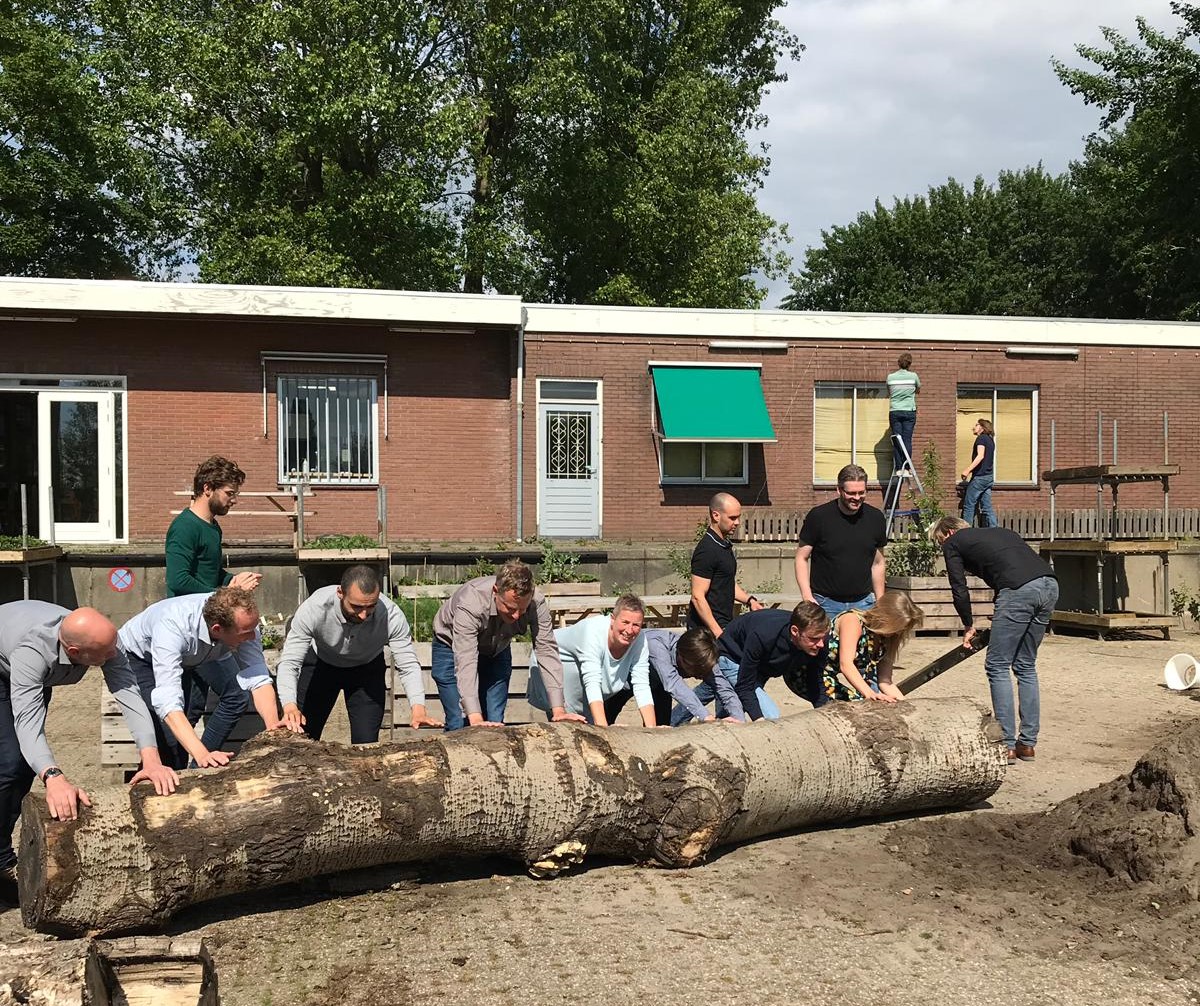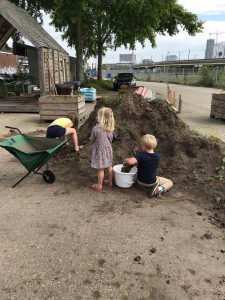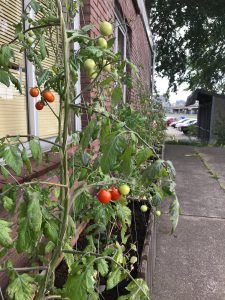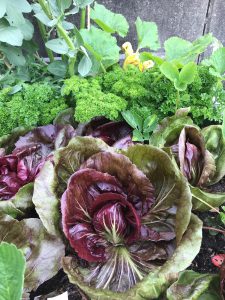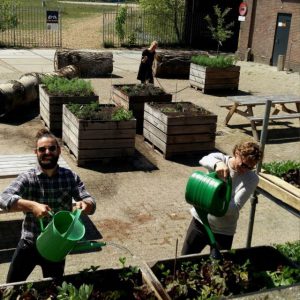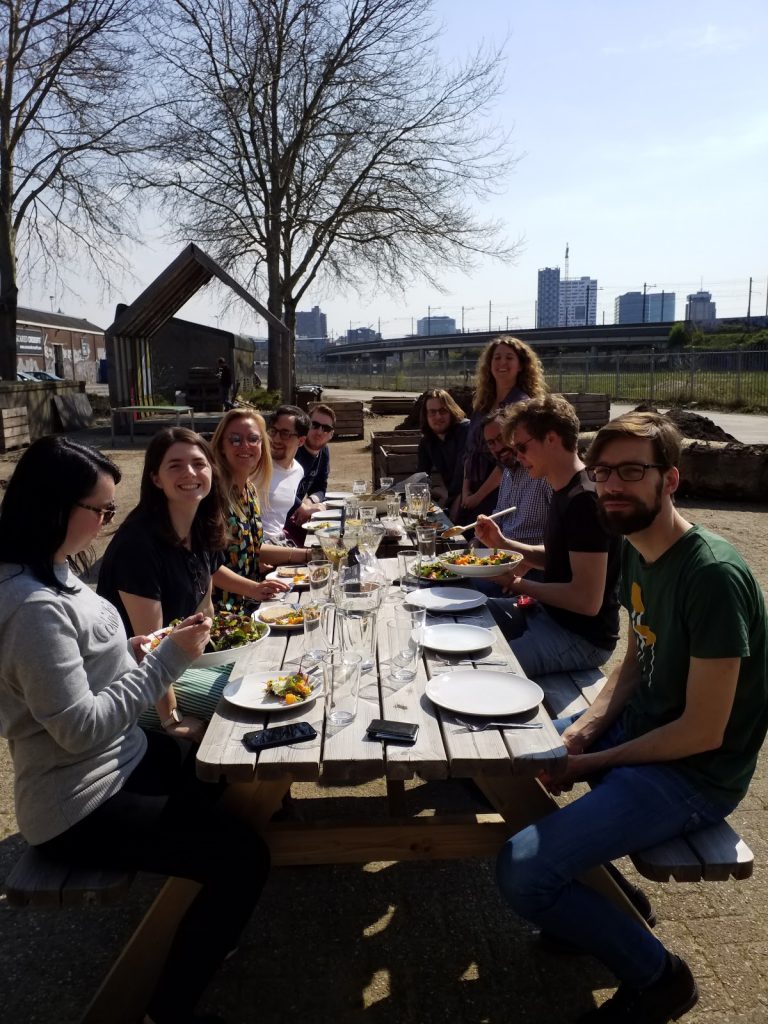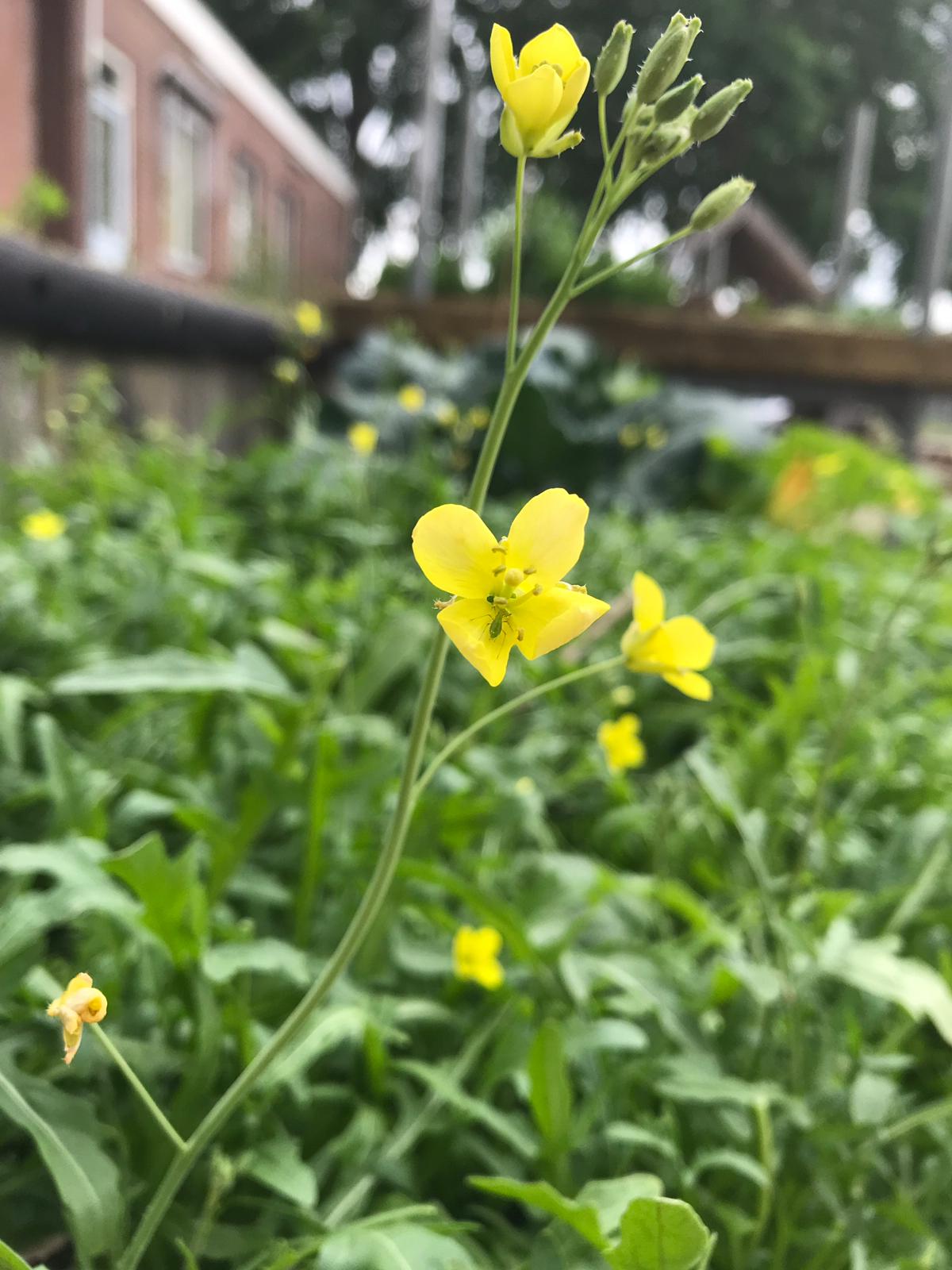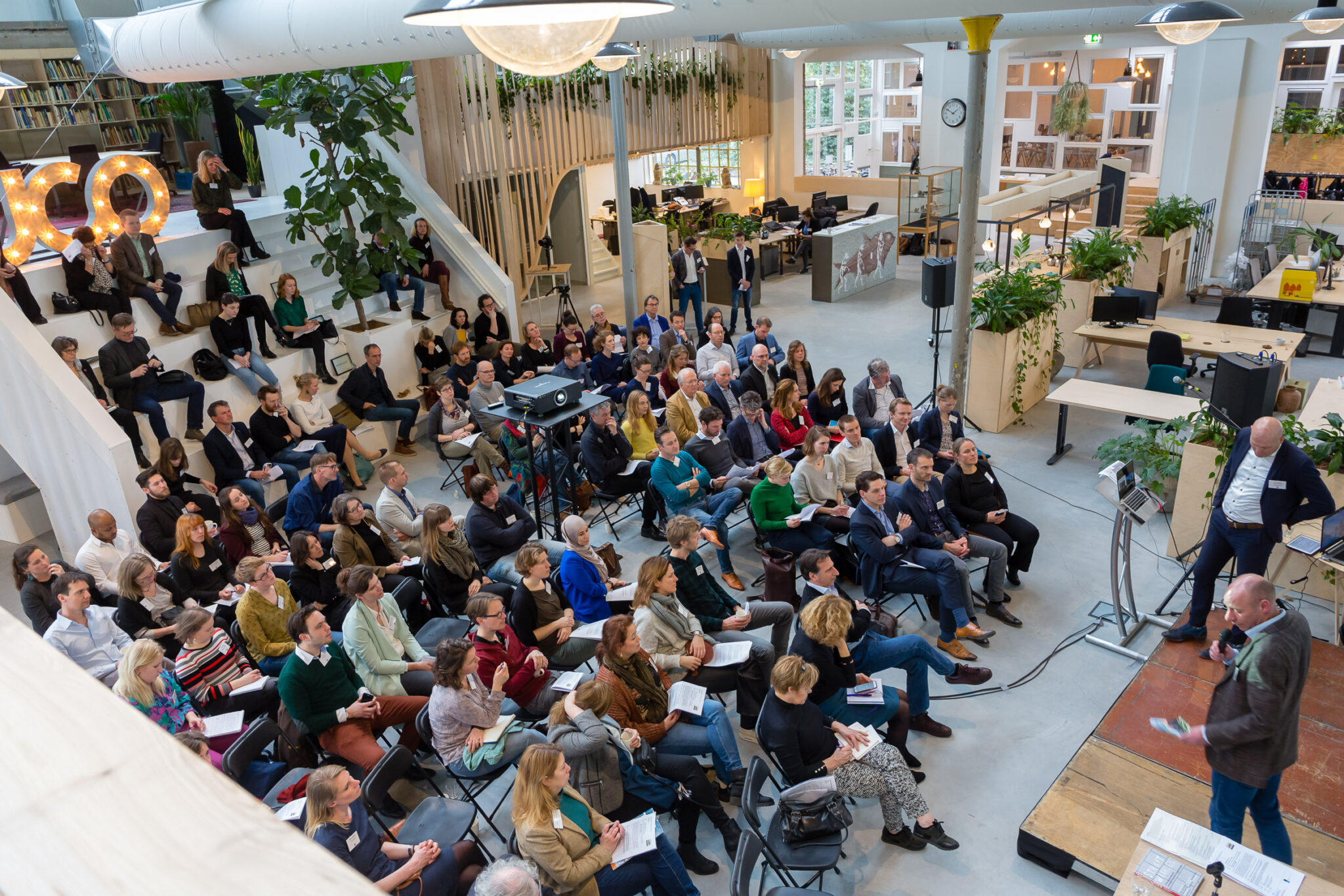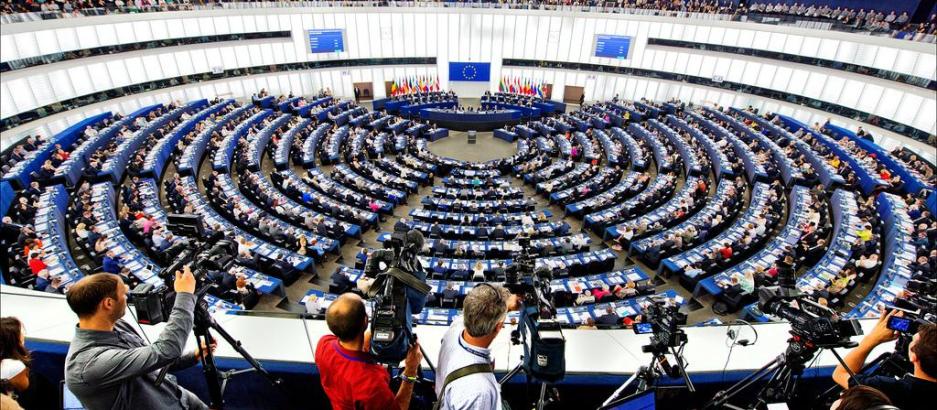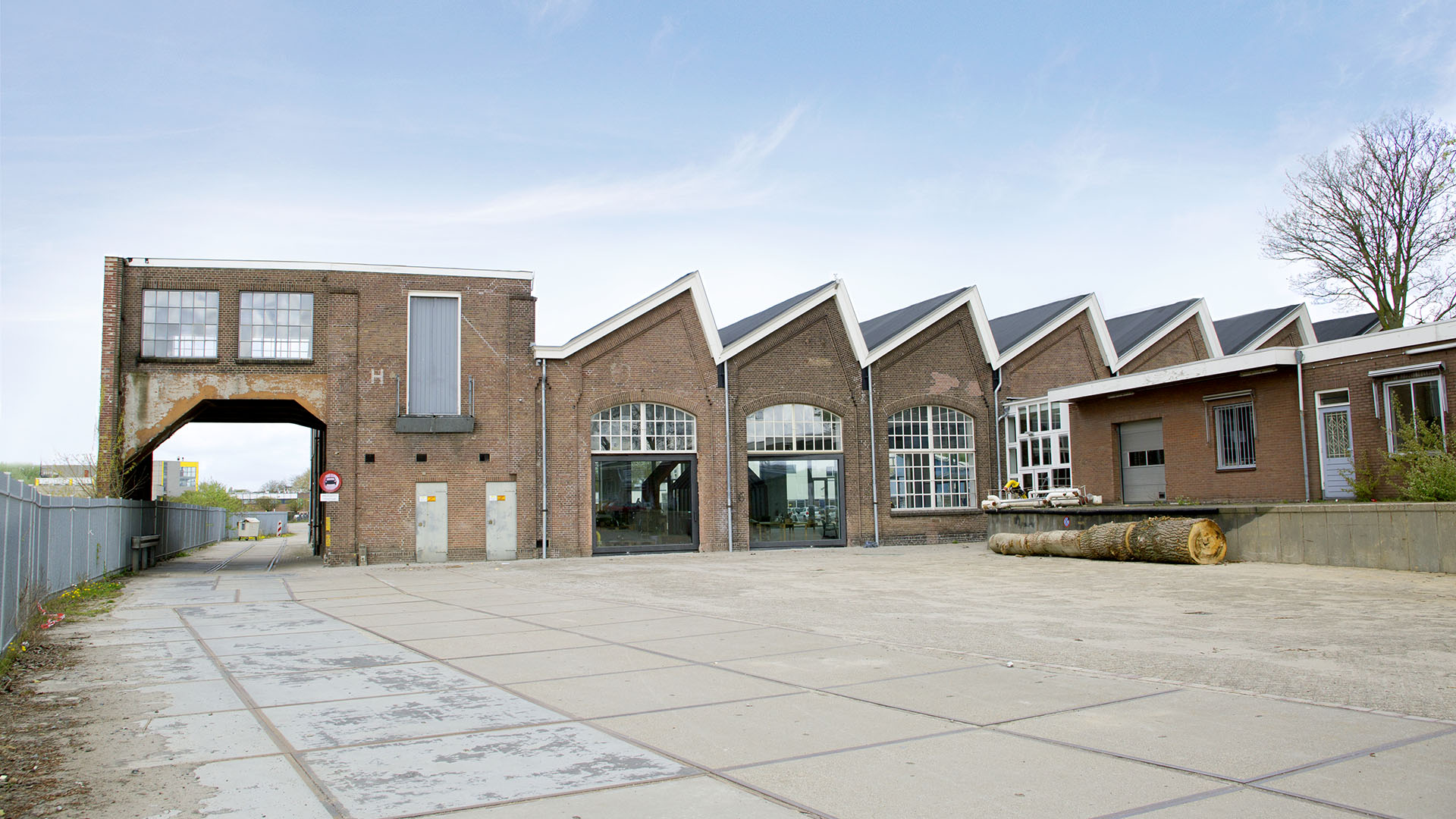Utrecht Community consists of more than 25 organizations that all contribute to integrated sustainability from their own discipline. In this blogpost, one of UCo’s communitymembers shares its’ knowledge and ideas on a specific topic.
Written by: Jane Butler from Except Integrated Sustainability
Plans were bubbling for almost a year at UCo, as a small group mused over how they could use the outdoor office space for a garden and maybe grow food for employees. UCo is a relatively young community of sustainability professionals, founded in 2017. As the community matured, the garden became a realisable project. “This year as UCo is evolving, wider participation from the group began taking place. People wanted to make our outdoor area more beautiful and unique to what we do”, my colleague Saskia explained to me, having been involved since the idea’s inception.
The office at UCo is indeed beautiful on the inside, with plants and trees sprawling high and wide around the shared office space. There is plenty of natural light filtering through large glass panels. Located in an industrial building, between two diverging train tracks from Utrecht Centraal, our concrete urban surroundings merited some inspired action.
A lot of background work was involved, of course: ordering soil, choosing seeds, and sourcing expertise. “We had to make a lot of phone calls!”, said Emma, our architect, having invested many hours in the process. An external expert volunteering with us, Suzanne Van Der Berg was essential. Suzanne told me that she was motivated to transform what was then a grey yard, into a green one, “so that people could interact with nature during their day”. We found that enthusiasm around the project generated generous sponsorship from the kickstarter Pay it Forward, as well as a local farmer who provided, free of charge, the apple crates in which we would plant almost everything.
The date was set to ‘Make the Garden Great’ and a willing number of people left their desks one late afternoon to get involved. The group effort involved clearing a space and shifting large quantities of soil to the various plots. This kind of physical endeavour made sure that we began breaking a sweat and working in unison with each other. It was a great way to get to know people that you had seen daily but never chatted to.
“The garden is the new connector in the community. It has become an easy way to interact with different people.” says Emma.
After about two evenings of work, some laughs, dirty office wear for the inappropriately dressed, and some shared beers afterwards – we had a garden that was beginning to sprout.
Now, some weeks on, the beds are almost overflowing with the first harvest. I talked to people in the community to see what the results have been.
How are you making use of our new garden?
“I always have my lunch outside if the weather permits. I really like to work and then go outside for a little bit, to see if I can pick out some weeds. Small contact with nature is really relaxing.”
“My favourites of the garden are the Moroccan mint that I use for tea, and the fennel leaves that really add to flavour in a dressing”
“It’s extremely practical as we don’t buy salad leaves anymore. Value is increasing for biodiversity as we see in small birds, butterflies and bees!”
“As a cooking enthusiast trying to shift towards a (mostly) plant-based diet, a blooming garden on the office doorstep is a blessing”
Our abundant rocket took the prize for the favourite pick, among everyone.
Does it have an effect on your working day?
“During the day, it is really nice to spend half an hour outside, whether we are watering the beds, having a walk with colleagues or sampling some of the flavours. It makes me feel very proud.”
“I love seeing the noticeable growth after a weekend. I can walk around and sample a bit of everything!”
“We are all working in sustainability in one way or another. We should be able to come into contact with nature in a small way during our day.”
Charles brought along his kids to the office, and it seems that they now regard growing food as a norm in office life. “The kids love it. For them, it’s completely normal that an office should have a garden with food.”
“The general norm before was that you could eat your two sandwiches as quickly as possible behind your desk. A garden empowers people to think more about their food rituals during the day.”
I see the project as a bright addition to individuals and to the community as a whole. It is the combination of working in a garden, and enjoying better tasting fresh ingredients that creates a sense of well being which is already manifesting itself. We have work ahead to ensure daily watering and maintenance as the garden evolves and as different produce becomes available. The date is already set for the next sowing session. We had the fortune of strategic timing, as the summer months arrive affording us the luxury to eat outside. Yesterday, I learned how to pick fennel, so I am now planning my exit from meetings, to get my hands dirty, and prepare a fresh salad on time for lunch.
